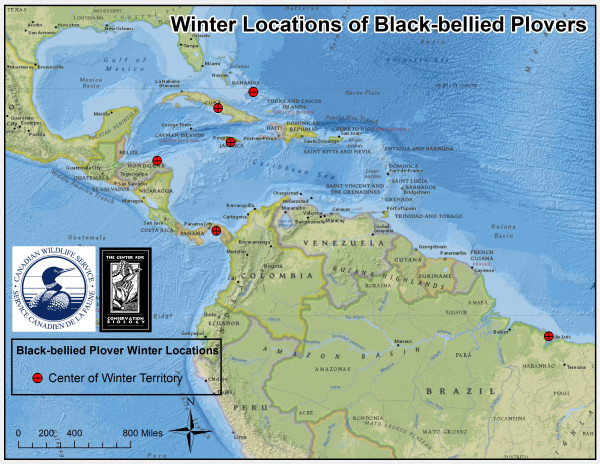Black-bellied Plovers Tracked to Wintering Grounds
Breeding peregrines consolidate along the mid-Atlantic coast
January 11, 2016
Bald Eagle “HE” Feb/17/2009 – Jan/6/2016
January 11, 2016
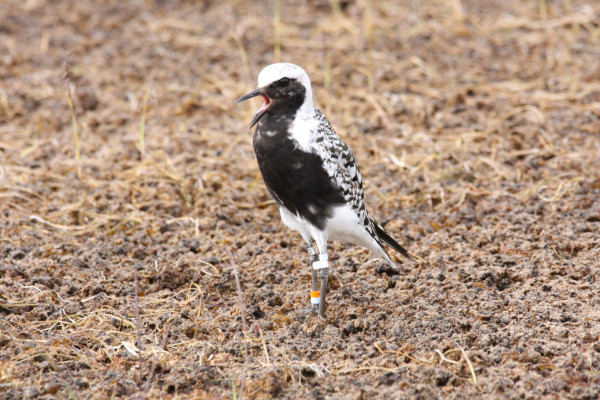
Black-bellied plover on its breeding grounds. Photo by Fletcher Smith.
The Center for Conservation Biology, in partnership with the Canadian Wildlife Service, has tracked black-bellied plovers from their Arctic breeding locations and fall stopover locations to their wintering grounds. The plovers were trapped on the breeding grounds at Polar Bear Pass National Wildlife Area, located on Bathurst Island, Nunavut Territory, as well as at Mingan Archipeligo National Park Reserve, located in the Quebec Province along the St. Lawrence River.
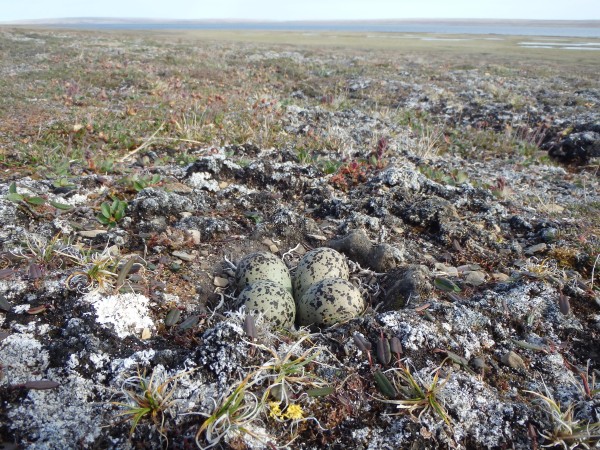
Black-bellied plover nest at Polar Bear Pass National Wildlife Area. Photo by Fletcher Smith.
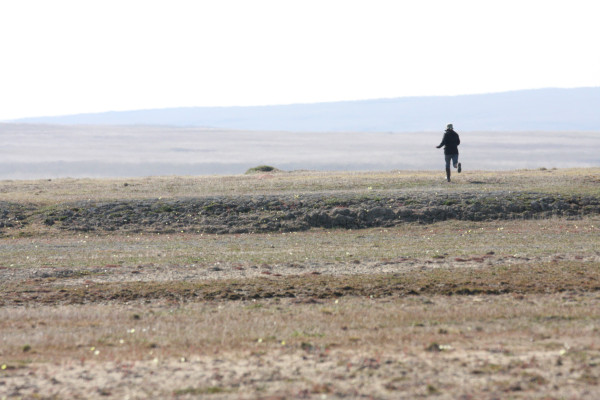
Beth MacDonald (CWS) races to a trapped plover on nesting grounds. Photo by Fletcher Smith.
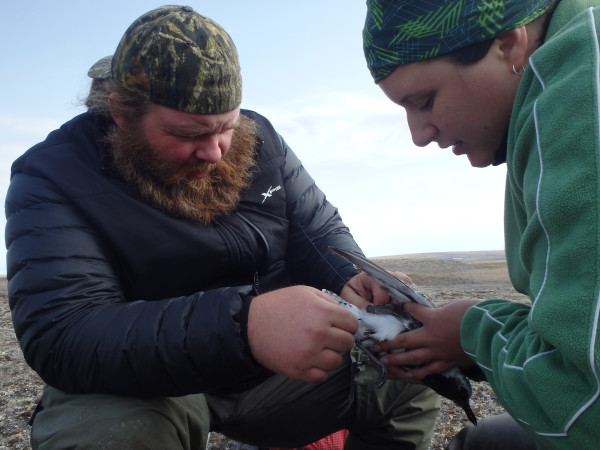
Fletcher Smith (CCB) and Julie Belliveau (CWS) deploy a satellite unit on a black-bellied plover. Photo by Beth MacDonald.
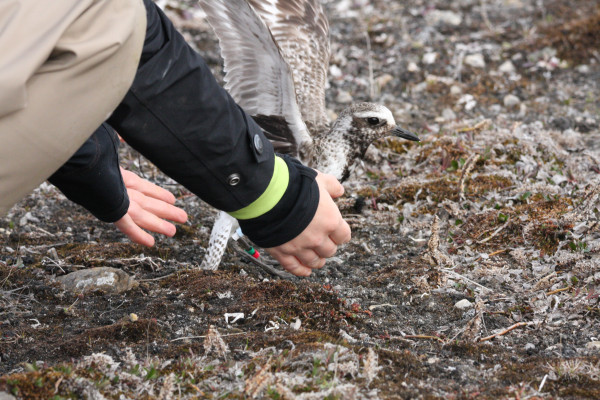
Black-bellied plover released with satellite transmitter attached. Photo by Fletcher Smith.
The current locations of the tracked plovers are spread across a wide zone of the Caribbean and Central and South America. This wintering strategy contrasts with whimbrels that were tracked using similar satellite tags, with the majority of those birds concentrated in a relatively small area of Brazil. Black-bellies have a more generalist approach to habitat and diet than most shorebirds, and this may help explain why they are not concentrated in one area of the tropics and occupy such a broad latitudinal and longitudinal gradient in winter.
Several interesting migration tracks were recorded, including a non-stop transoceanic flight from Newfoundland to Brazil, with the plover making the 3,462 mile (5,570km) flight in approximately five days. A long-distance land route was also recorded, with the bird flying nearly six days and 3,960 miles (6,373km) from the high arctic breeding grounds to the wintering grounds in Cuba. The migration route of the plover tagged on Mingan Archipeligo is interesting in that it provides evidence that at least some of the Atlantic Coast flyway shorebird populations utilize wintering grounds on the Pacific Ocean, in this case the well-documented shorebird hotspot of the Bay of Panama.
The high arctic nesting plovers appear to have several migration strategies. Several staged near the breeding grounds, then flew non-stop to winter locations. Several also migrated from breeding grounds to Atlantic Canada stopover locations before departing to winter locations. One of the tagged plovers was likely lost over the ocean due to interaction with a tropical storm system.
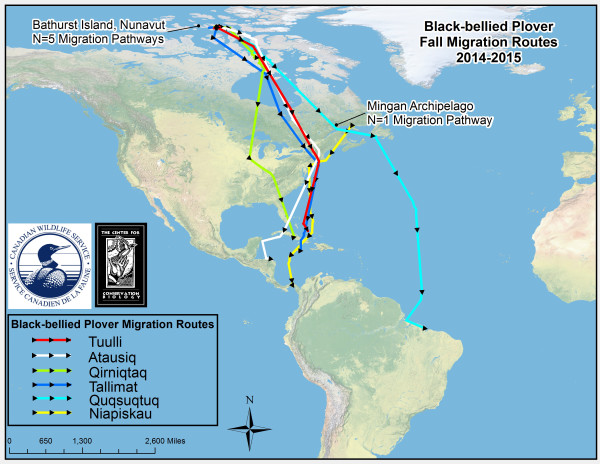
Migration routes of black-bellied plovers tagged on breeding grounds and a stopover location along the St. Lawrence River. Data from CCB.
Black-bellied plovers are one of the smallest birds that can be tracked using current satellite tracking technology. Recent technological advances have reduced the size of satellite units, and this promises to answer life-cycle questions on even smaller migratory species.
The tracking of black-bellied plovers is a collaborative effort between The Center for Conservation Biology and the Canadian Wildlife Service, who initiated the tracking in 2014. Logistical support for the Bathurst Island field expedition was provided by the Polar Continental Shelf Program in Resolute, Nunavut. The tracking of the plovers is an ongoing project and the birds can be followed at Seaturtle.org.
Written by Fletcher Smith | fmsmit@wm.edu | (757) 221-1617
January 11, 2016

